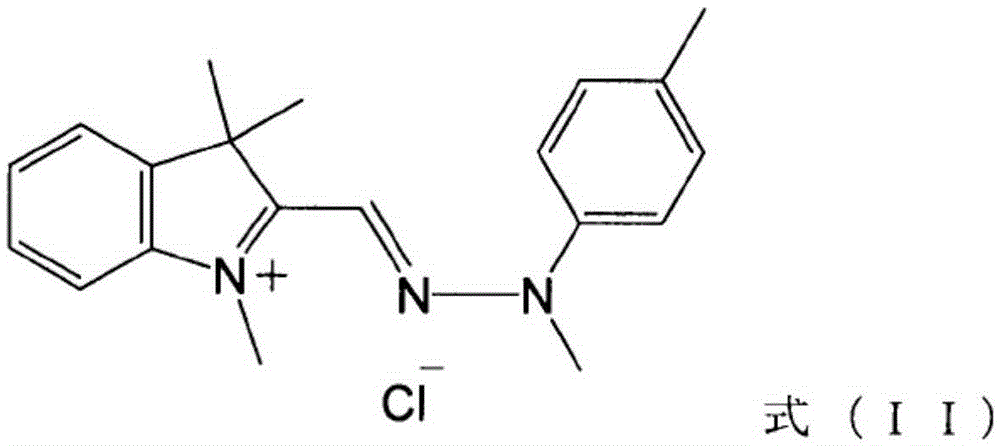Compositions and their use to treat complications of aneurysmal subarachnoid hemorrhage
A technology of dyes and compounds, applied in the field of dyes for hair dyeing, can solve the problems of limited dyes, and achieve the effects of good light fastness, low-cost level dyeing, and good water solubility
- Summary
- Abstract
- Description
- Claims
- Application Information
AI Technical Summary
Problems solved by technology
Method used
Image
Examples
Embodiment 1
[0086] As shown in Table 1, as a pH regulator, citric acid·H 2 O1g and citric acid tri-Na 2H 2 O11g was dissolved in ion-exchanged water to produce 1 kg of an aqueous solution (water+pH regulator) of pH 6. To the obtained aqueous solution at pH 6, Yellow 29 as a dye and benzyloxyethoxyethanol as a penetrating agent were blended in the composition shown in Table 2 to prepare a hair dye composition at pH 6. 10 g of the produced hair dye composition was weighed, 1 g of human white hair (100%, Beaulaxcoltd, product code BM-W-A) was added, and it was dyed at 45° C. for 20 minutes. Wash the obtained dyed hair with water (running water at 15-25°C for about 1 minute), soap it under the following soaping conditions, wash it with water (running water at 15-25°C for about 1 minute), and leave it at room temperature (about 20°C). ) under natural drying to obtain test samples. In addition, in the following examples and comparative examples, pH adjustment of the hair dye composition was ...
Embodiment 2
[0106] [Example 2] (shampoo fastness test)
[0107] The test sample of Yellow 29 obtained in Example 1 was subjected to the shampoo fastness test shown below, and the dyeing density (K / Sd) and color difference (ΔE*) before and after the test were measured. The results are shown in Table 4. In addition, in the table|surface, the residual ratio (%) means the ratio of the dyeing density after a test, and the dyeing density before a test.
[0108] [Shampoo fastness test]
[0109] The test samples were subjected to the following (1) shampoo treatment, followed by (2) combing treatment as one operation, and after repeating this operation 5 times, they were naturally dried at room temperature (about 20° C.).
[0110] (1) Shampoo treatment conditions
[0111] Shampoo liquid: 5% sodium lauryl sulfate aqueous solution
[0112] Liquor ratio: 1:10 (relative to the quality of shampoo liquid of 1g of hair coloring quality)
[0113] Processing temperature: 45°C
[0114] Processing time...
Embodiment 3、 Embodiment 4
[0128] According to Table 1, aqueous solutions of pH 5 and pH 7 were produced, and the aqueous solutions of pH 5 and pH 7 were used instead of the aqueous solution of pH 6 to produce a hair dye composition, except that the test was obtained by the same method as in Example 1 (dye: yellow 29). Sample inspection. The dyeing density (K / Sd) and color (L*, a*, b*) of the obtained test sample were determined. The results are shown in Table 5.
PUM
 Login to View More
Login to View More Abstract
Description
Claims
Application Information
 Login to View More
Login to View More - R&D
- Intellectual Property
- Life Sciences
- Materials
- Tech Scout
- Unparalleled Data Quality
- Higher Quality Content
- 60% Fewer Hallucinations
Browse by: Latest US Patents, China's latest patents, Technical Efficacy Thesaurus, Application Domain, Technology Topic, Popular Technical Reports.
© 2025 PatSnap. All rights reserved.Legal|Privacy policy|Modern Slavery Act Transparency Statement|Sitemap|About US| Contact US: help@patsnap.com



